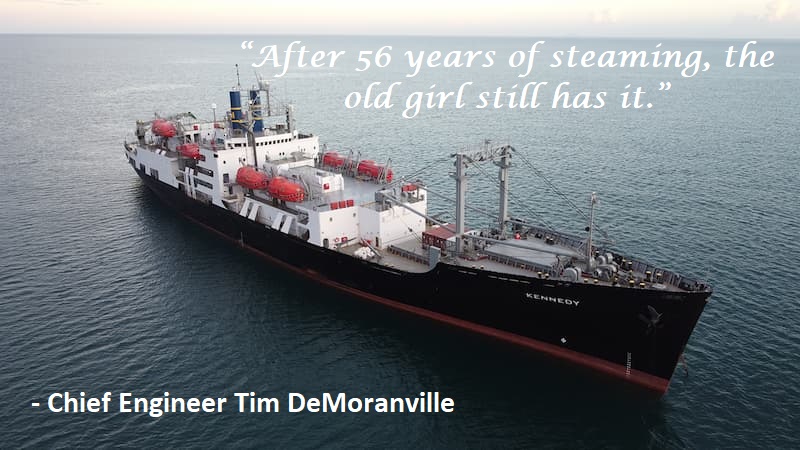
In the words of the TS Kennedy’s Chief Engineer Tim DeMoranville,
“After 56 years of steaming, the old girl still has it."
Fasten your seatbelt! Let’s go below deck with Chief Engineer Tim DeMoranville. Let's listen as Chief DeMoranville explain the TS Kennedy's speed test.
Between the hours of 0900 and 1700 on Valentine’s Day, the TS Kennedy was put to the test as an 8-hour “power run” of the ship’s engineering plant was performed. This is required by the United States Marine Administration (MARAD) every time the training ship to ensure the ship can meet the needs of both the Academy's Sea Term voyages and any emergency humanitarian missions.
On a typical Sea Term between ports, the TS Kennedy steams between 40 revolutions per minute (rpm) and 60 rpm of the propeller shaft. Depending on wind and sea conditions, this equates to somewhere between 8.2 and 13.5 knots of speed.
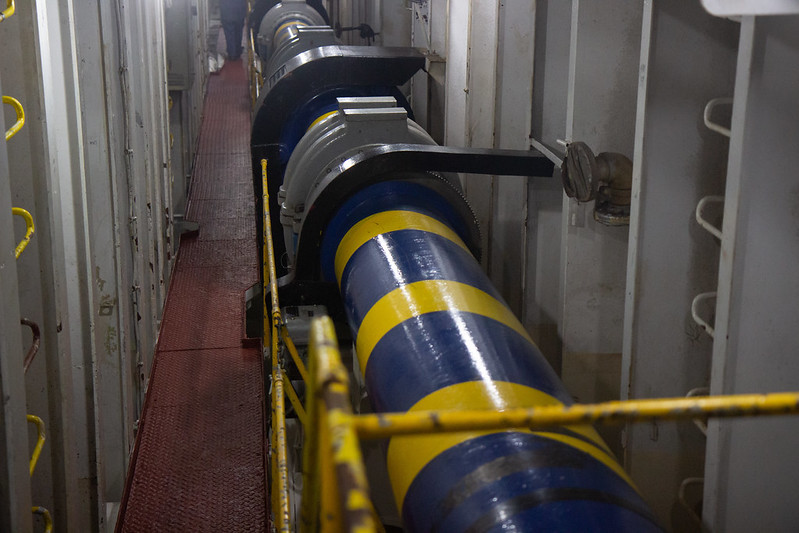
For the power run, we opened up more nozzles on the steam turbine and ramped up our boiler output to achieve 84.3 rpm for the 8-hour period.
How did we calculate our overall rpm?
What sort of data do we expect from this?
Let’s explore the math calculations involved in deciphering the data.
The TS Kenney has a shaft counter that is constantly counting each time the shaft makes a revolution.
At 0900 the counter read 1841230.

At 17000 the counter read 1881680.

This means over the 8-hour period the shaft rotated 40,450 times.
Why is this important?
We're able to calculate our average rpm by:
dividing 40,450 revolutions by 480 minutes
480 minutes = the number of minutes in 8 hours
This equates to 84.3 rpm or revolutions per minute.
The pitch of the propeller aboard TS Kennedy is 22.946 feet.
This means for every revolution, the ship "ideally" travels 22.946 feet through the water.
Multiplying 40,450 revolutions times 22.946 feet/revolution gives us 928,166 feet of advance.
There are 6,076 feet in a nautical mile.
Dividing 928,166 feet by 6076 feet/nm gives us a calculated distance travelled of 152.8 miles...or known to us as engine miles.
This is used to compare to "observed miles" from the Bridge. I don't have the observed miles from the evolution but do have the observed speed which we will discuss below.
So we went 152.8 nautical miles in 8 hours.
Dividing 152.8 by 8 gives us a calculated speed of 19.1 knots.
Observed speed from the Bridge was 21 knots. .
How is this possible? Because we had approximately 1.9 knots of current from the Gulf stream "pushing" us along.
The difference in observed miles and engine miles is known as "slip".
Because propeller efficiency isn't perfect it's important to calculate the slip on a daily basis. This will help determine how efficient the propulsion plant is pushing the ship through the water. In situations like our power run, when a vessel is operating with the current behind them you "should" always see a negative "slip". Meaning the ship moves more actual miles over the ground than the propeller theoretically pushed it.
So at this point we've calculated how far we went, our average RPM, our average speed, and talked about how Kennedy's speed over ground was faster than the engine speed due to the current pushing us along. The other big point of data here is our fuel consumption.
Kennedy burns two kinds of fuel. She carries approximately:
10,000 barrels of VLSFO
2,000 barrels of LSMGO.
Each "barrel" contains 43 US gallons.
The heavy oil is known as VLSFO...known as very low sulfur fuel oil. The oil is heavy, black, and needs to be heated before burning in the boilers.
The other type of fuel we carry is known as LSMGO...or low sulfur marine gas oil. This LSMGO is almost identical to what you'd purchase at a Diesel pump at your local gas station, with the exception it's dyed red. For the power run, we burned the LSMGO.
During the 8-hour power run:
port boiler: burned 3,511 gallons
starboard boiler: burned 3,512 gallons
TOTAL: 7,023 gallons
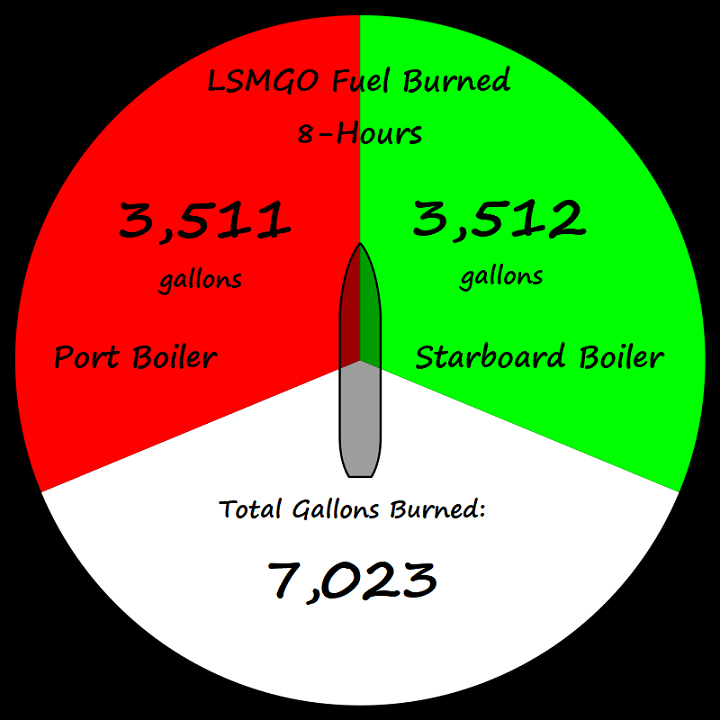
We have meters on each boiler that totalizes the amount of fuel we put through them. If we wanted to "pay at the pump" with diesel being $5.99 per gallon, the 8-hour run would have cost us:
$42,067.77
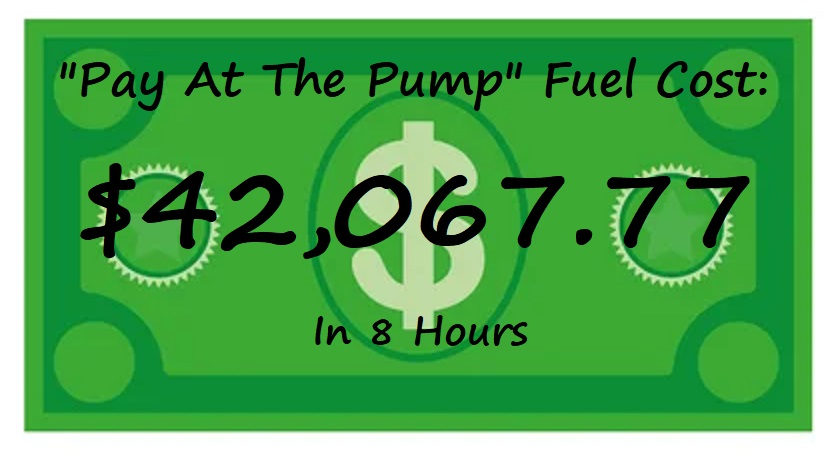
If we wanted to "check our mileage", we can divide 7,023 gallons by 152.8 miles. That would give us:
46 gallons per mile
or
.021 miles per gallon
While those numbers are cool, in the professional world we want to know how many barrels we use per day, and the number of barrels per mile. For that, we take 7023 gallons per 8 hours and multiply by 3 to get a 24-hour burn.
This would equal:
21,069 gallons per day
Divide 21,069 by 42 gallons/barrel and you end up with:
502 barrels per day at that speed
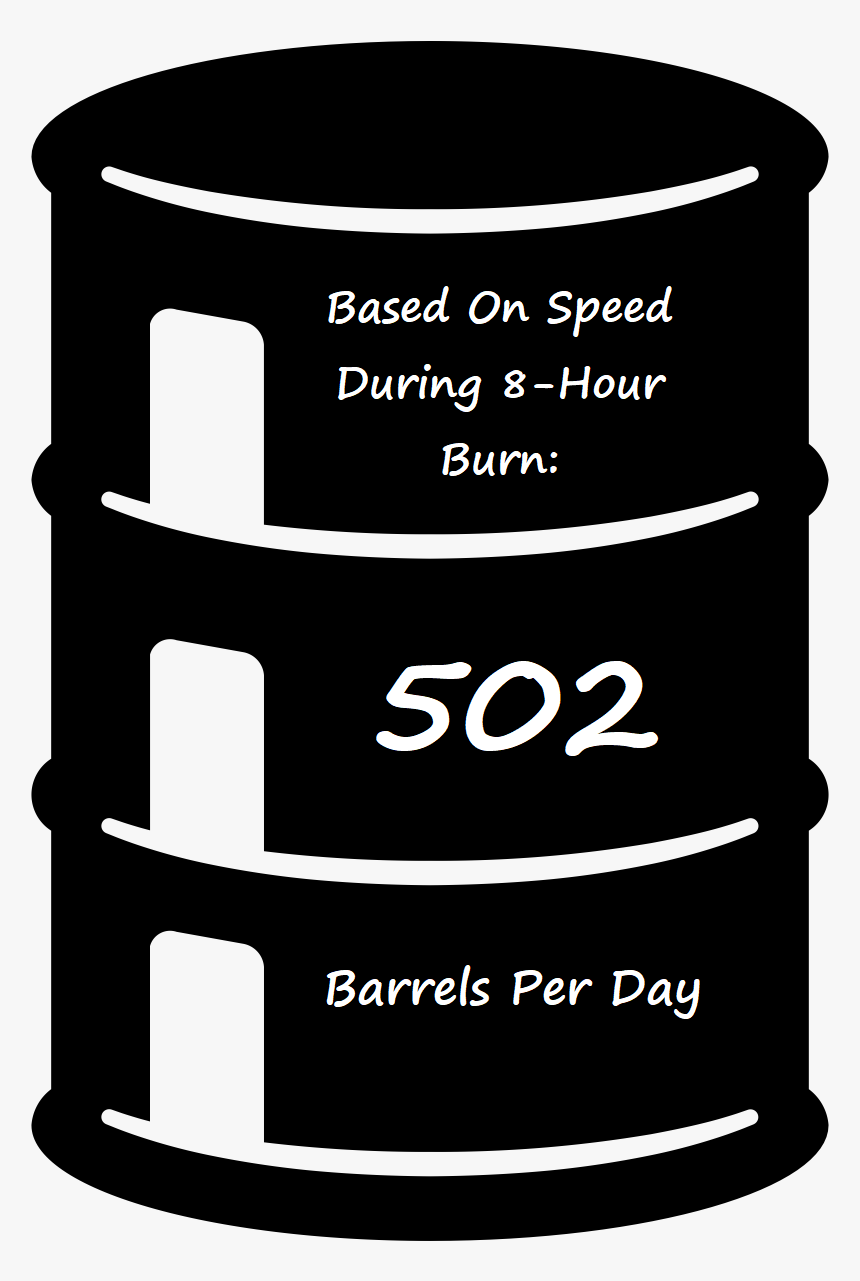
For our barrels per mile, we can take:
7,023 gallons divided by 42 which equals 167 barrels
Dividing 167 barrels we burned up the 152.8 miles we traveled during the power run gives us a rate of:
1.09 barrels per mile at that speed
This number is crucial when it comes time for ordering fuel and knowing how much you need to go to a certain distance.
While all the data is important in ship operation, the fact that everything ran as it should for the 8-hour period is equally as important. When Kennedy was a cargo ship, she was designed with a 20-knot service speed.
The power run we did yesterday which averaged between 19 and 21 knots show that after 56 years of steaming, the old girl still has "it".

